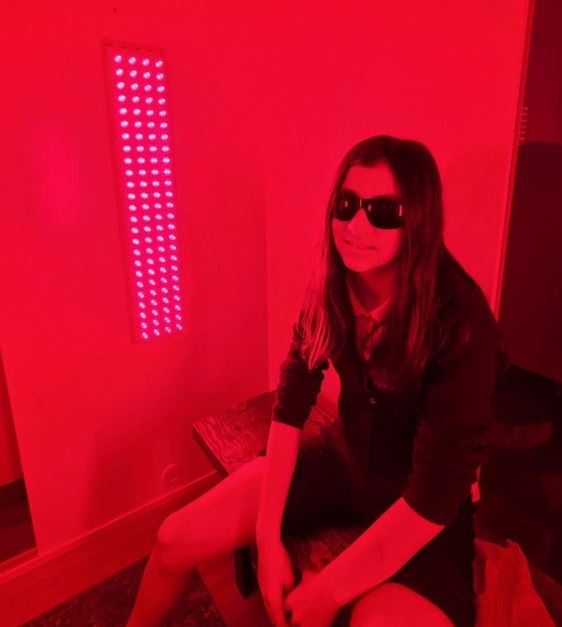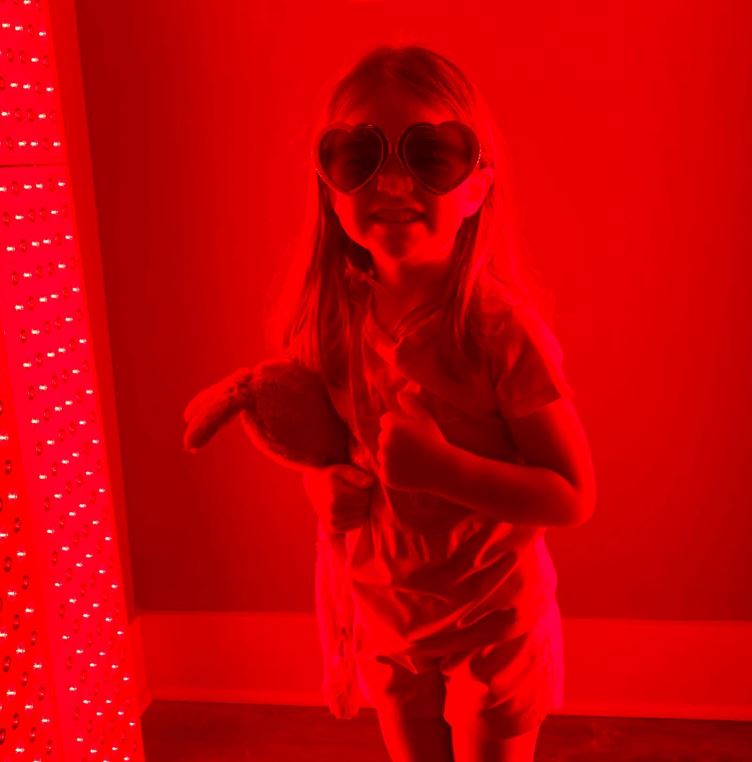![]() Free Shipping
Free Shipping ![]() Buy Now, Pay Later
Buy Now, Pay Later ![]() Eligible
Eligible
Red Night Light Benefits for Children’s Restful Sleep

Introduction
Every parent knows the struggle of putting their child to bed—only for them to wake up multiple times during the night. Whether it’s fear of the dark, difficulty falling asleep, or frequent awakenings, sleep disturbances in children can affect their mood, cognitive development, and overall health.
One simple yet scientifically backed solution is using a red night light in your child’s bedroom. Unlike blue or white light, red light has unique properties that promote relaxation and better sleep quality.
In this article, we’ll explore:
- The science behind red light and sleep
- Key benefits of red night lights for children
- How to choose the best red night light
- Tips for optimizing your child’s sleep environment
By the end, you’ll understand why a red night light could be the missing piece in your child’s bedtime routine.
The Science Behind Red Light and Sleep
How Light Affects Sleep
Our sleep-wake cycle (circadian rhythm) is heavily influenced by light. The brain’s pineal gland produces melatonin, the “sleep hormone,” in response to darkness. However, certain wavelengths of light—especially blue light from screens and LEDs—can suppress melatonin, making it harder to fall asleep.
Red light, on the other hand, has the longest wavelength in the visible spectrum (620-750 nm). Research shows that red light has minimal impact on melatonin suppression, making it ideal for nighttime use.

Why Red Light is Better Than Other Colors
- Blue/White Light: Disrupts melatonin, increases alertness.
- Green Light: Moderate melatonin suppression.
- Red Light: Least disruptive, promotes relaxation.
A 2012 study published in the Journal of Clinical Endocrinology & Metabolism found that red light exposure before bed did not significantly reduce melatonin levels, unlike blue light. This makes red night lights a safer choice for children’s bedrooms.
5 Key Benefits of Red Night Lights for Children
1. Promotes Melatonin Production for Better Sleep
Since red light doesn’t interfere with melatonin like blue light does, it helps maintain your child’s natural sleep cycle. This means:
- Faster sleep onset
- Fewer nighttime awakenings
- Deeper, more restorative sleep
2. Reduces Fear of the Dark Without Disrupting Sleep
Many children are afraid of the dark, leading to bedtime resistance. A soft red glow provides enough light to ease anxiety without stimulating the brain.
3. Helps Regulate Circadian Rhythm in Young Children
Infants and toddlers are still developing their circadian rhythms. Exposure to bright lights at night can confuse their internal clocks. A dim red light helps signal that it’s time to sleep without overstimulating them.
4. Ideal for Night Feedings and Diaper Changes
For parents of babies, a red night light is perfect for nighttime care. It provides enough visibility without fully waking the baby (or the parent!).
5. May Improve Sleep Quality in Children with ADHD or Autism
Some studies suggest that children with ADHD or autism spectrum disorder (ASD) are more sensitive to light. Red light’s calming effect may help them settle down more easily.
How to Choose the Best Red Night Light for Your Child
Not all red night lights are created equal. Here’s what to look for:
1. Adjustable Brightness
A light that’s too bright can still be disruptive. Opt for one with dimmable settings.
2. Warm Red Hue (Not Cool Red)
Some “red” LEDs emit a cooler, pinkish tone. A deep, warm red (like sunset) is most effective.
3. No Blue or White Light Leakage
Ensure the light doesn’t have hidden blue/white LEDs (common in multi-color night lights).
4. Portable & Safe Design
- Battery-operated for flexibility
- Cool-to-touch materials
- No small parts for toddlers
Top Recommended Red Night Lights:
- Hatch Rest Baby (red light + sound machine)
- VAVA Night Light (dimmable, portable)
- Munchkin Light My Way (soft glow, toddler-safe)
VELLGUS Elite V2
THE #1 RATED RED LIGHT DEVICE
VELLGUS pro V2
THE #1 RATED FULL BODY RED LIGHT DEVICE
Tips for Optimizing Your Child’s Sleep Environment
A red night light works best when combined with other sleep-friendly habits:
1. Keep the Room Dark (Except for the Red Light)
Use blackout curtains to block streetlights or early sunrise.
2. Limit Screen Time Before Bed
Avoid TVs, tablets, and phones at least 1 hour before bedtime to prevent blue light exposure.
3. Establish a Relaxing Bedtime Routine
- Warm bath
- Calming storytime
- Soft lullabies or white noise
4. Maintain a Cool Room Temperature
The ideal sleep temperature for kids is 68-72°F (20-22°C).
5. Use the Red Light Consistently
Consistency helps train your child’s brain to associate the red glow with sleep time.
Common Myths About Night Lights and Sleep
❌ Myth: Any Night Light is Fine
✅ Truth: Blue or white lights can disrupt sleep. Red is the best choice.
❌ Myth: Complete Darkness is Always Better
✅ Truth: For kids afraid of the dark, a dim red light is better than no light at all.
❌ Myth: Night Lights Cause Long-Term Sleep Problems
✅ Truth: When used correctly (red light, low brightness), they can actually improve sleep.
Final Thoughts: Should You Try a Red Night Light?
If your child struggles with:
- Falling asleep
- Nighttime fears
- Frequent awakenings
…then a red night light is a simple, science-backed solution worth trying. Unlike harsh white or blue lights, it supports natural melatonin production while providing just enough comfort to ease anxiety.
Give it a week—you might be surprised at how much more restful your child’s sleep becomes!
FAQs About Red Night Lights
Q: At what age can I start using a red night light?
A: Even newborns can benefit from a dim red light during nighttime feedings.
Q: Can adults use red night lights too?
A: Absolutely! Red light helps adults sleep better as well.
Q: How long should the red light stay on?
A: All night if needed, but ensure it’s very dim.
Q: Are salt lamps a good alternative?
A: Himalayan salt lamps emit a warm glow but aren’t as effective as true red LEDs.
Conclusion
Sleep is crucial for a child’s growth, learning, and emotional well-being. By incorporating a red night light into your child’s room, you’re taking a scientifically supported step toward deeper, more restful sleep—for them and for you!








